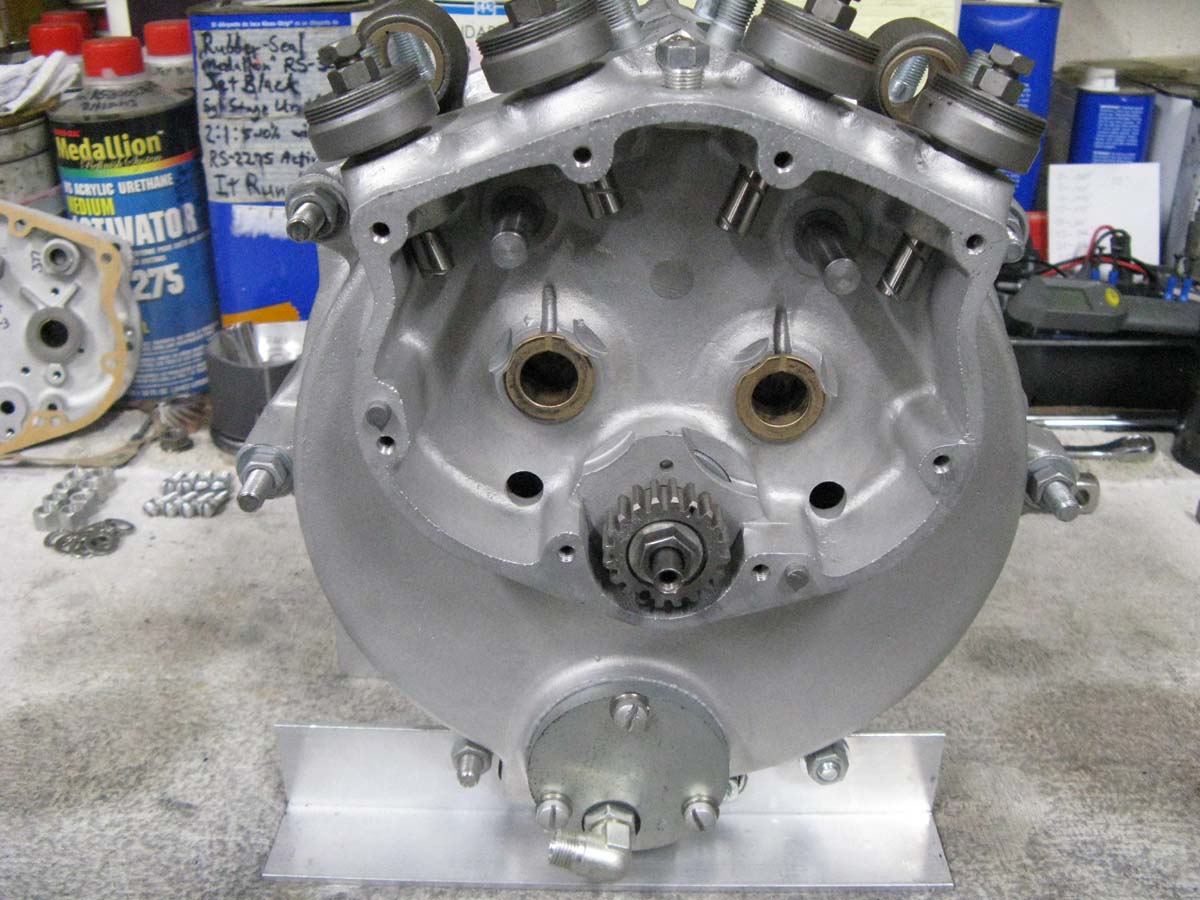1940 Scout #1 (58" Stroker Motor) Info


Here are (3) nearly identical Scout 58" Stroker motors. They are high-performance, yet fully streetable. I have built a few of these that have put on many thousands of miles, and still run strong. They don't leak, smoke, rattle, or get hot. These motors benefit from the many years of Land Speed racing Indian Scouts at Bonneville (successfully!). Every time I raced, and set records, I would do complete tear-down on the motors, and then do a forensic study to look for wear, so I could adjust the clearance specs to see if I see an improvement. I did at least (14) re-builds, and finally was satisfied with my wear patterns everywhere. These motors use all these final specs, and below, you can see a comprehensive spec sheet for each motor (Blue-Printed).
These motors use good 1940-42 motor cases, that are matched sets. I rotate the push rod guides 90 degrees to put the oil slot to the right (uphill). I use longer base studs, Glyptol paint the inside, trim the cases for stroker rod clearance, and modify the right case for a 1947 Chief oil sump "Scraper". I remove the pinion and drive races, then hone them to fit rollers to the shafts. After re-installing them, I final hone for a perfect .001" clearance. On final assembly, I add a rubber oil seal for the drive race, like the '52-'53 Chief.
These motors have the late '40-'42 heavy duty rods. They are plenty strong. They have new lower races, and good upper bushings honed to fit. The pistons are "Ross Forged" pop-up pistons, with the pop-up of around .154". So, the heads are "Fly-cut" for clearance equal to the pop-up. Then, they use special copper head gaskets of .050" thickness. That give the motors a .050" "Squish" area above the piston. This is a good number for some extra power. They have very good "NPR" metric rings that are high tech, and light. The same as I race with for LSR records on Nitrous!
The heads are good late "un-milled", with any chip repair done. I gave up on factory head bolts a long time ago. They just strip out the threads in the cylinders. I make studs instead, with a screw-driver slot, and individualy numbered, so they go back in the right holes. Then they have the early beveled edge washers, with ARP Grade-10, 12 point "Flange Nuts". This is a real improvement, and looks good as well. Just torque the copper head gaskets to 50 Ft/Lb. They will NEVER blow out.
These motors have 1938-46 Iron pumps, that are re-built with new gears. Oil sump line, Scraper, and oil fittings as well. They were very good cores (I rebuilt them)! On top are good original distributors loaded with new parts, and the electronic "Pointless" ignitions set at 30 degrees full advance.
These motors have a real nice carb setup for performance, and reliability. They have Mikuni "VM36" round slide carbs that are the same ID as the manifolds. They work very well on these 58" Strokers! The manifolds are from Enfield Racing, cast in Bronze, and with a nice ported, and smooth inside. I added "2-bolt" plates to mount Mikuni rubber spigot mounts for the carbs. Then, I made carb support straps. This is a very nice setup.
The cam chest is where the action's at! These motors have my "Hot Rod" cam lobes on very good gears and new shafts. They use my Scout Racing Lifters, and this package really picks up power, and RPM. They are (237) degree duration, and .383" lift. I designed these for "Hot Street" use. My lifters are very strong (4140 chrome steel), and have "Needle Bearing Rollers" for high lift, and stronger spring pressures. Compared to my other long duration racing cams, these will increase the low to mid range torque, while giving up a small amount of power at high RPM. The push-rods are new "spiral grooved", with new adjusters, and honed guides for a .001" fit. The cam bushings are "line-reamed" for a no-slop, smooth fit (.001"). The cam chests have been clearanced for the lifters, due to the high lift.
The cylinders were good rebuildable cores, that I went through to as new "Blue-Printed" spec. I did sleeves where needed, as well as new valve seats where needed. I did new guides, and honed to fit the valve stems. I added Teflon seals to the intake guides. Then I did "5-angle" valve jobs. The bores are honed for a .006" bore to piston skirt clearance, and the pistons have a robust deisel skirt coating for long life. They have special 7-coil valve springs of my design for no coil-bind, and more tension. I installed my fiber washers, and shim kits for optimum spring pressure. They all have my Titanium light Retainers, and new keepers. They also have new chrome valve covers. The intake valves are Manley extreme duty stainless steel, and the exhausts are Kibble-White "Black Diamond" from Gary Stark.
Motor Spec Sheets


Parts List, Prices, and Total Costs


Picture Gallery below, during the Build




![]()





![]()









So, what do you think?
CONTACT INFORMATION:
James R. Mosher
(505) 466-7870

























